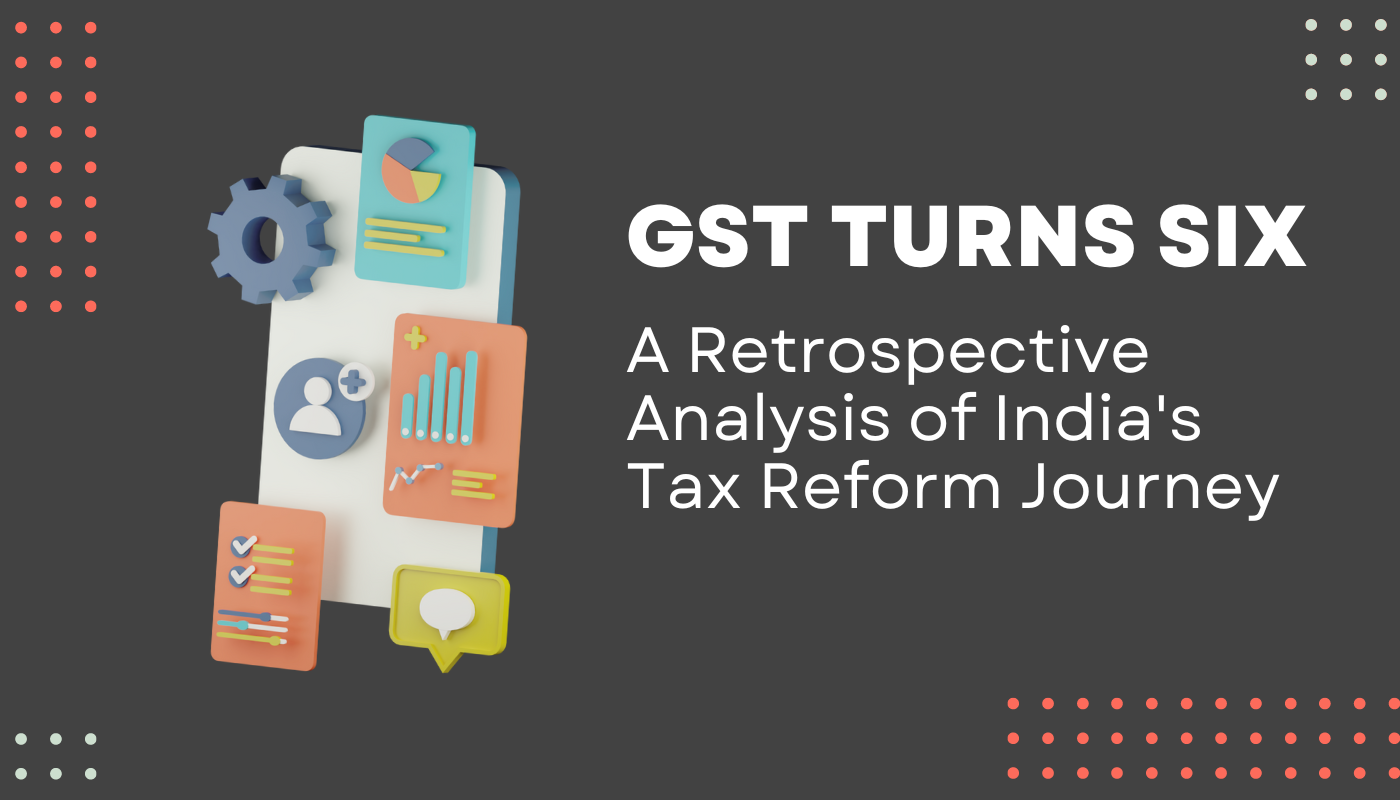


July 1, 2017, marked a significant milestone in India's tax landscape with the introduction of the Goods and Services Tax (GST). This comprehensive tax reform aimed to streamline the indirect tax system by replacing multiple taxes such as excise duty, service tax, and state-specific VAT with a unified tax structure. As GST completes its sixth year, it is essential to reflect on its journey, assess its impact, and understand the challenges and opportunities it has brought to India's economy.
The implementation of GST was a monumental task that required the collaboration of the Central government and 29 states to create a unique dual GST model. This model consolidated multiple tax laws into a single system, bringing unity and simplicity to India's tax structure. Despite initial doubts about its successful execution, GST has witnessed remarkable progress over the years.
One of the key achievements of GST has been the expansion of the taxpayer base. Since its introduction, the number of registered taxpayers has surged from 63.9 lakh in 2017 to approximately 1.40 crore currently. This exponential growth demonstrates the widespread adoption of GST by businesses across various sectors.
GST has laid the foundation for a seamless national market, reshaping India's tax landscape and driving economic growth. By digitizing processes from registration to return filing, the GST portal has ensured smoother compliance for businesses, fostering a tech-enabled environment. This digitization has not only simplified tax procedures but has also paved the way for other significant indirect tax reforms, such as e-way bills and e-invoicing.
The digitization of processes has been one of the greatest advantages of GST. Every step, from obtaining a registration to filing a return or getting a refund, can now be done entirely online. This has eliminated the need for businesses to physically visit a GST office, saving time and resources. Additionally, the GST portal provides an online dispute resolution system, further streamlining the process for businesses.
Moreover, GST has played a crucial role in modernizing India's tax compliance. It has contributed to the implementation of various digital reforms across the country. The introduction of e-way bills has enabled the government to track the movement of goods, ensuring transparency and efficiency in the supply chain. E-invoicing, on the other hand, has revolutionized invoicing practices by standardizing electronic invoices, facilitating seamless data sharing and tracking between businesses and the government.
One sector that has experienced a significant impact from GST is manufacturing. The elimination of the cascading effect of taxes and the reduction in manufacturing costs have provided a boost to the sector. This, coupled with the post-COVID economic boom and the sustained momentum of the "Make in India" initiative, has led to remarkable growth in the GST treasury, surpassing pre-pandemic collections.
However, challenges persisted, particularly concerning complexities in return forms and the ambiguity surrounding tax rates and classifications of certain goods and services. These challenges have often resulted in disputes and uncertainty among businesses. Additionally, combating tax fraud has remained a priority, with the government implementing measures to ensure compliance and weed out fraudulent practices.
India Inc. has played a crucial role in shaping the perception of GST. According to a recent survey, 72% of respondents recognize the positive impact of GST, reflecting an increase from 59% last year. The business community acknowledges the benefits of GST, such as the integration of medium and small businesses with extensive supply chains, including e-commerce platforms.
However, the survey also highlights that certain sectors, such as retail trade, construction and real estate, and some service segments, are more prone to voluntary exclusion from GST. This raises concerns about the need to encourage wider participation and ensure that all businesses can reap the benefits of the GST system.
As India continues to embrace the transformative power of GST, there is immense potential for further growth and harmonization in the coming years. However, certain areas require attention to enhance the effectiveness of GST. These areas include commencing taxation of petroleum crude, high-speed diesel, petrol, natural gas, and aviation turbine fuel. Additionally, the inclusion of other levies such as electricity duty and stamp duty is crucial for a more comprehensive tax structure.
Furthermore, clarifying conundrums related to inter-branch services, cross-charging, taxation of online gaming activities, and transactions involving cryptocurrency is essential for greater clarity and consistency in tax regulations. The officials should also address issues related to electric vehicles, discounts and schemes, rationalization of tax rates, and the upgrading of tax laws to keep up with the evolving digital landscape.
Arun Jaitley, the former Finance Minister, played a pivotal role in the successful implementation of GST. His strategic leadership and knack for handling multiple GST Council meetings were instrumental in bringing consensus among states on various aspects of GST. Jaitley's generosity and ability to build relationships with both political leaders and the bureaucracy contributed to the smooth execution of GST.
As GST completes six years, it is evident that it has reshaped India's tax landscape, driven digitization, and boosted economic growth. The expansion of the taxpayer base, the simplification of compliance procedures, and the elimination of cascading taxes have been significant achievements of GST. However, challenges persist, and further improvements are necessary to ensure the seamless integration of businesses and the realization of GST's full potential. With continued efforts and reforms, GST holds the promise of further harmonization and prosperity for India.